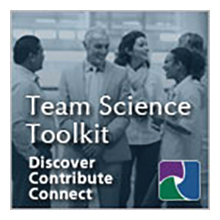Paper Session: Compositional Dynamics and their Influence on Team Science
Tuesday, August 2, 2022
11:30 PM - 12:45 PM ET
|
Magnets of Collaboration: When Salary Disparity is a Draw Rather Than a Drag for Teaming
Kevin Kniffin
Abstract: Salary differences within teams have been studied in relation to a range of operational conditions and outcomes; however, whether and how the formation of teams is influenced by salary disparity has not been closely examined. Through a set of three replicated and pre-registered studies, we show evidence that teaming decisions are influenced by salary disparities. Study 1 finds - contrary to extant theories - that people tend to choose co-workers who are relatively high paid; however, the tendency relies significantly upon an assumption that salary is positively associated with co-workers' knowledge, skills, abilities, and experience (KSAE). In Study 2, we show that the prospect of teaming-up with higher-paid co-workers is associated with more favorable dispositions towards higher-paid co-workers, suggesting that organizations that foster collaboration enjoy greater flexibility with respect to their compensation structures. Study 3 indicates that people are more inclined to select a higher-paid co-worker when there will be generalizable skills; and, such decisions are mediated by the favorable dispositions expected of such a teammate. In contrast with frameworks that predict salary disparities should be a drag on teaming with higher-paid co-workers, we build new theory while identifying multiple conditions when people are more likely drawn to working with higher-paid co-workers.
|
|
Team Power Dynamics and Team Impact: New Perspectives on Scientific Collaboration using Career Age as a Proxy for Team Power
Huimin Xu
Abstract: Power dynamics influence every aspect of scientific collaboration. Team power dynamics can be measured by team power level and team power hierarchy. Team power level is conceptualized as the average level of the possession of resources, expertise, or decision-making authorities of a team. Team power hierarchy represents the vertical differences of the possessions of resources in a team. In Science of Science, few studies have looked at scientific collaboration from the perspective of team power dynamics. This research examines how team power dynamics affect team impact to fill the research gap. In this research, all co-authors of one publication are treated as one team. Team power level and team power hierarchy of one team are measured by the mean and Gini index of career age of co-authors in this team. Team impact is quantified by citations of a paper authored by this team. By analyzing over 7.7 million teams from Science (e.g., Computer Science, Physics), Social Sciences (e.g., Sociology, Library & Information Science), and Arts & Humanities (e.g., Art), we find that flat team structure is associated with higher team impact, especially when teams have high team power level. These findings have been repeated in all five disciplines except Art, and are consistent in various types of teams from Computer Science including teams from industry or academia, teams with different gender groups, teams with geographical contrast, and teams with distinct size.
|
|
Better Science through Philosophy: The Challenges and Benefits of Including Philosophers of Science on Science Teams
Kathryn Plaisance
Abstract: Interdisciplinary science teams are essential to addressing complex problems such as climate change and vaccine hesitancy. Teams taking on these challenges often include researchers from the natural and physical sciences, health sciences, and social sciences. However, it is much less common for science teams to include humanities scholars. This is unfortunate as fields like philosophy of science have the potential to improve scientific research as well as its application and uptake. Philosophers of science are well versed in scientific concepts, theories, and methods, and are trained to examine the ethical and epistemic (or knowledge-related) issues underlying scientific research. In this talk, we discuss a project intended to foster fruitful collaborations between philosophers of science and STEM professionals. Over the past several months, we have conducted semi-structured interviews with scientists and engineers who have worked closely with philosophers of science. Our research examines the challenges scientists face when collaborating with philosophers, the strategies they use to address them, and the benefits scientists experience through these broadly interdisciplinary collaborations. (This research builds on a previous project that included interviews with philosophers of science who have done scientifically engaged work. Our current goal is to better understand the perspectives of STEM researchers themselves.) Our findings indicate that scientists and engineers experience unique barriers when working with philosophers of science. In addition to the challenges STEM researchers typically encounter on interdisciplinary science teams, our participants noted the wide gap in writing and publishing norms between the sciences and humanities, and some pointed out that the disciplinary expectations for philosophers (e.g., to publish solo authored work) can be particularly problematic. Some teams were able to overcome these barriers by using a "flipped model" of publication. Others had less success when it came to co-authorship, but typically felt that the collaboration was still beneficial to them both professionally and personally. In fact, many of the benefits that STEM researchers highlighted arose from their interpersonal interactions with philosophers and did not require formal collaborative outputs.Perhaps even more interesting were scientists' educational backgrounds, attitudes, and motivations for collaborating with philosophers. Many participants had early exposure to philosophy of science (e.g., through coursework) or were friends with philosophers of science, suggesting the importance of previous familiarity with philosophy. Some participants also highlighted the need for scientists to be more open to diverse approaches and perspectives. Finally, while only some participants struggled to identify specific outcomes or impacts, the vast majority felt as though these collaborations were worthwhile.
|
|

